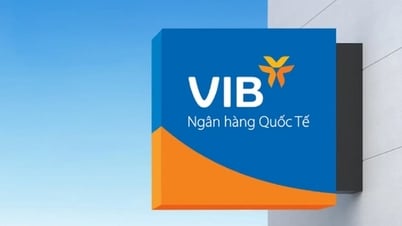Reporter: Can you tell us your views on the press market and future trends in journalism?

- Mr. LE QUOC MINH - Member of the Party Central Committee, Deputy Head of the Central Propaganda and Mass Mobilization Commission, President of the Vietnam Journalists Association , Editor-in-Chief of Nhan Dan Newspaper: Recently, we have talked a lot about digital transformation, about social networking platforms that support the dissemination of content, and how to effectively use these platforms to increase the number of users and increase revenue. However, with the rapid changes in technology and artificial intelligence (AI), we will witness strong changes in the near future.
For example, recently, we have had many training programs for reporters on how to use AI to serve their work - not just text, images, and videos to create entertainment products. Those steps are very correct and necessary, but in the near future, we will witness even stronger changes in media technology, and in the very near future, it will be the story of wearable devices.
Until now, very few domestic press agencies have had a strategy for wearable products, specifically glasses, watches, rings, brooches and many other things. Meanwhile, these platforms are gradually becoming more popular, especially when AI helps people to give voice commands very accurately. Instead of having to type, using the phone to give commands or having to directly use voice to search, now it is no longer necessary. These will be trends that are forecasted to develop in the very near future, possibly in 2026.
So, how do press agencies around the world as well as in Vietnam take advantage of these platforms, sir?
- Of course, we have also talked about the so-called Metaverse (roughly translated as virtual universe) or are testing and applying virtual reality, augmented reality, gradually being brought into applications of press media. But then there will be other things that we have not seen yet that will be born.
Currently, many international press agencies have a very in-depth research and development department, but most press agencies in Vietnam do not. Instead, domestic press agencies see any technology that they are interested in and buy it for use; or they see it developing but do not have enough capacity to apply it. Meanwhile, many press agencies in the world have a department that researches what the current and future needs of users are; what the world in terms of technology will be like and how to utilize it, not only for online newspapers but also for print newspapers, radio and television.
Establishing a research and development department is a bit difficult for small newspapers. But even large press agencies in Vietnam do not invest much in this force, while traditionally, the press should be a pioneer in technology.
So it can be said that the press is quite slow now. For example, when GPT chat was born, we struggled to find out what we could use from GPT chat - that is, applications for making images and videos and integrating them, not to mention that the press had to research and be ahead, although this was not easy in terms of technology, at least we could research trends, but in reality, the press agencies did not have or could not do this.
With the popularization of technology skills, applying technology is not a difficult thing. The leaders of press agencies themselves must understand technology to motivate and encourage their colleagues to use it. Understanding here means knowing the limits, not just using it "all over". How to use it is okay, how not to use it, where there is a risk of incorrect content, where there is a risk of copyright infringement, even ethical issues... Only when leaders of press agencies understand can they encourage reporters to use it appropriately and effectively.
In the context of print newspapers' decreasing circulation and difficult revenue, many press agencies have sought revenue from readers paying for unique and different columns and press products, but it is also very difficult. What do you suggest about this issue?
- There is no single model for news organizations. We look at the success of The New York Times with more than 10 million paying readers as a motivation to strive. But most news organizations in the world have about 100,000 paying readers, which is a huge success, even tens of thousands of people can still generate significant revenue.
So, first of all, you have to create content that people find interesting. Another barrier is that when most people see that they can read this content for free somewhere, why would they pay for it? This is natural in a world where in the past people had to go to newspapers to get news, but now news is everywhere. So news is not something that can be sold, but in-depth content is.
But for in-depth content, the percentage of readers willing to pay - even in developed countries - is very low, not high, only around 10%. Even in countries like Japan and Korea, the percentage of people willing to pay is very low. Only in the Nordic countries are there high percentages of readers willing to pay for paid journalism.
Therefore, attracting readers to pay for your services is a must, but success or failure depends on many factors. Not to mention, in countries like Vietnam, paying for newspapers is not a familiar story or is a concern for many different reasons.
But generating revenue from readers is not just about charging people to read newspapers, there are many ways. For example, abroad there are programs called membership, when you register as a member and pay a certain fee, you will enjoy certain incentives. Or do programs such as meetings, exchanges, talks, then discounts, gifts... In general, there are about 14-15 ways to make money according to business models, of which there are about 3-4 business models from readers such as: buying printed newspapers, paying for electronic newspapers, members, joining clubs to enjoy mechanisms and policies.
I know that the Lao Dong Newspaper has a "For VIP Readers" section on its online newspaper that charges a fee. Some press agencies in Vietnam also have sections that readers have to pay for. However, charging for a fee is very challenging and not easy. Therefore, we have to think of ways to connect with readers, so that when they see the benefits there, they will pay for it.
To "sell" products, you need to have a lot of customer care techniques, use technology and AI to understand users' needs, find ways to "addict" readers, not just create a section and let anyone who likes it click to subscribe and read.
Source: https://nld.com.vn/bao-chi-phai-gay-nghien-doc-gia-196250724201139453.htm





























![[Photo] National Assembly Chairman attends the seminar "Building and operating an international financial center and recommendations for Vietnam"](https://vphoto.vietnam.vn/thumb/1200x675/vietnam/resource/IMAGE/2025/7/28/76393436936e457db31ec84433289f72)







































































Comment (0)